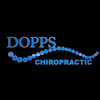Understanding the T2 Vertebra and Its Pivotal Role in Heart Health
- Dr. Rory Dopps

- Apr 26, 2024
- 2 min read

The T2 vertebra is crucial in the complex network of the thoracic spine, particularly influencing the heart’s function including its valves and coronary arteries. Misalignments or disruptions at this vertebral level can profoundly affect cardiovascular health, leading to symptoms such as arrhythmias or chest pain, which are significant indicators of underlying spinal issues.
Deep Dive into T2 Nerve Interference
The T2 vertebra's nerve connections are instrumental in regulating not just the mechanical functions of the heart, but also the arterial system that fuels it. When these nerves are compromised, whether through physical misalignment or external pressures, they can manifest as physical discomforts such as heart discomfort or palpitations, and circulatory issues affecting overall energy levels and stamina. This disruption can cascade into broader health issues, making it vital to recognize and address these symptoms promptly.
Lifestyle Factors Affecting T2 Alignment
The alignment of the T2 vertebra can be influenced by everyday activities and postures that may seem benign but have long-term effects. These include:
Prolonged periods of poor posture, especially common in sedentary lifestyles or desk-bound professions.
Activities that involve repetitive or high-impact motion to the upper back without proper posture or support.
Habitual behaviors that place uneven stress on the body, such as carrying heavy bags on one shoulder or repetitive twisting motions during physical tasks.
These activities underscore the importance of maintaining spinal health through conscious lifestyle choices and ergonomic practices.
Who Needs to Be Vigilant?
Certain professional groups are more susceptible to T2 misalignments due to the nature of their work. These include truck drivers, office workers, construction laborers, and high-impact athletes, all of whom engage in activities that predispose them to potential spinal issues.
Proactive Measures and Ergonomic Solutions
Incorporating ergonomic solutions such as posture correctors or supportive seating can significantly mitigate the risks associated with T2 misalignments. These tools help maintain an optimal alignment of the spine, reducing undue pressure on the thoracic region and promoting a healthier posture during both active and passive activities.
Nutritional Support for Enhanced Heart and Spinal Health
Optimizing heart health with the support of targeted nutritional supplements can also play a crucial role. Products like Designs for Health's Arterosil® HP are formulated to support the cardiovascular system, enhancing heart function and promoting overall vascular health. This holistic approach to health support ensures that both spinal integrity and cardiovascular wellness are maintained.
Engage in Preventative and Corrective Care
For those experiencing symptoms related to T2 issues or those in high-risk professions, seeking chiropractic care can provide both preventative benefits and corrective treatment. Chiropractors specialize in diagnosing and treating spinal misalignments, offering treatments that can alleviate pain, correct posture, and restore function.
If you suspect that your heart health could be impacted by spinal issues, or if you wish to prevent future problems, consider reaching out for professional chiropractic evaluation and care. Visit doppskc.com to schedule your comprehensive online consultation today. Take a proactive step towards safeguarding your heart and spinal health, ensuring a stronger, healthier future.




Comments